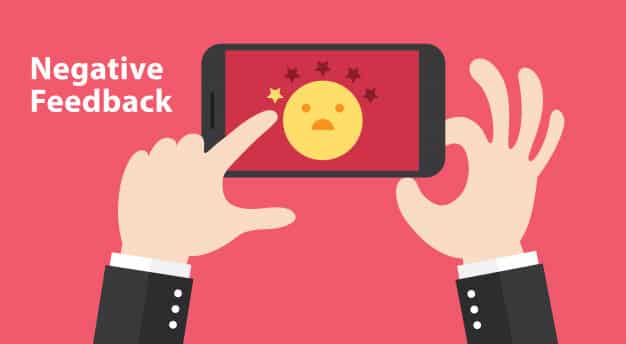“Your brand is what people say about you when you’re not in the room” ~ Jeff Bezos, CEO of Amazon.
What’s the first thing you do when you’re considering a product or service?
If you’re like most people, you read online reviews so you’ll know if a company is worth your time and money. This leads many business owners to focus on monitoring and highlighting positive mentions, and with good reason.
Marketing is all about analyzing and predicting consumer trends and using that information to anticipate and influence their future activities.
Social proof, which leverages the internal drive to seek approval and conform to societal standards, is a very effective marketing tool. It’s somewhat subjective, but research bears out the psychological impact of things like fear of missing out (FOMO) on sales.
* 92% of consumers surveyed state that they trust unpaid, authentic reviews over any other form of advertising.
* 88% of consumers consider user reviews to be just as trustworthy as personal recommendations
* The average consumer will read at least 10 reviews before making a buying decision
* It takes an average of 40 reviews for a customer to trust that a business’ star rating is valid and legitimate.
This leads marketers and business owners to focus on generating positive reviews and burying negative mentions. Do this at your own peril.
You may think that a negative review or two is nothing if you have a high percentage of 5-stars reviews and positive feedback. But, how you respond to negative reviews tells customers more about your trustworthiness and attitude toward customer care than 1,000 slaps on the back.
In fact, the absence of negative reviews will breed suspicion and leave people questioning the authenticity of any positive social proof.
Customer relationships are built on trust. Rather than ignoring negative feedback, you can turn the situation around and make it work for you.
Here’s how.
5 Ways Negative Reviews are Positive for Your Business
Bad reviews are a fact of life. You can’t please everyone. In order to conduct effective brand building, you’ll need to neutralize the negative and accentuate the positive.
They Increase Conversion Rates
Converting leads to customers is one of the main objectives of marketing. Believe it or not, a certain ratio of good to bad reviews will actually increase conversions by up to 18 percent. The theory is that a few less-than-stellar reviews lends authenticity and helps you overcome “too good to be true” syndrome.
How to leverage this fact: Make sure to keep the ratio higher in favor of positive mentions. If you’re getting a high number of bad reviews, something else is going on with your business. First, make sure that the reviews are legit and not the result of a negative campaign, and then try to determine the reasons behind the negative feedback.
They Help Identify Areas That Need Improvement
This is the simplest and most cost-effective form of audience research. All it involves is going through your reviews and paying attention to recurring complaints, comments, and suggestions for improvement.
How to leverage this fact: Make sure that you pay attention to constructive criticisms and take the time to address them and improve your product or service delivery. You can even make the fact that the improvements were brought on “by popular demand” to make your audience feel truly valued and included.
They Help With Customer Engagement
Bad reviews provide you with a unique opportunity to engage with customers in a very public and transparent manner. The public doesn’t necessarily mind a bad review or two. What they’re looking for is a responsive company that will address the negative comments immediately and work hard to bring about a resolution.
How to leverage this fact: Make sure that your deal with any negative reviews immediately and professionally.
They Improve the Buyer’s Experience
When you’re looking for a product, you want to be able to make an informed decision. Negative mentions aren’t necessarily deal-breakers. What didn’t work for one customer might be perfect for another.
How to leverage this fact: You can address the point of contention honestly and make suggestions that will enhance the experience and mitigate any downside. Even sincere apology that the product didn’t entirely fulfill their needs demonstrates that you’re human, which is a bonus in the age of automation.
They Make Positive Reviews Stand Out
This also comes down to customer perception when making comparisons. A few negative reviews in the midst of glowing recommendations makes the good ones seem more reliable and authentic. Consumers like to see side-by-side comparisons of pros and cons so that they can get the full picture of a product’s suitability.
How to leverage this fact: Make sure that your positives outnumber the negatives, not by removing bad ones, but by constantly working to improve your products and services.
Final Thoughts
We’ve all heard that when life hands you lemons, you should make lemonade. In a way, it’s the same with negative reviews.
It’s not the fact that they exist, but what you do with them that matters.
At Level343, we use current marketing best practices and tech to help you reach customers where they live. Our objective is to provide you with actionable information that you can use to increase brand awareness and provide better service.
Don’t hesitate to reach out and tell us about your marketing challenges.



































